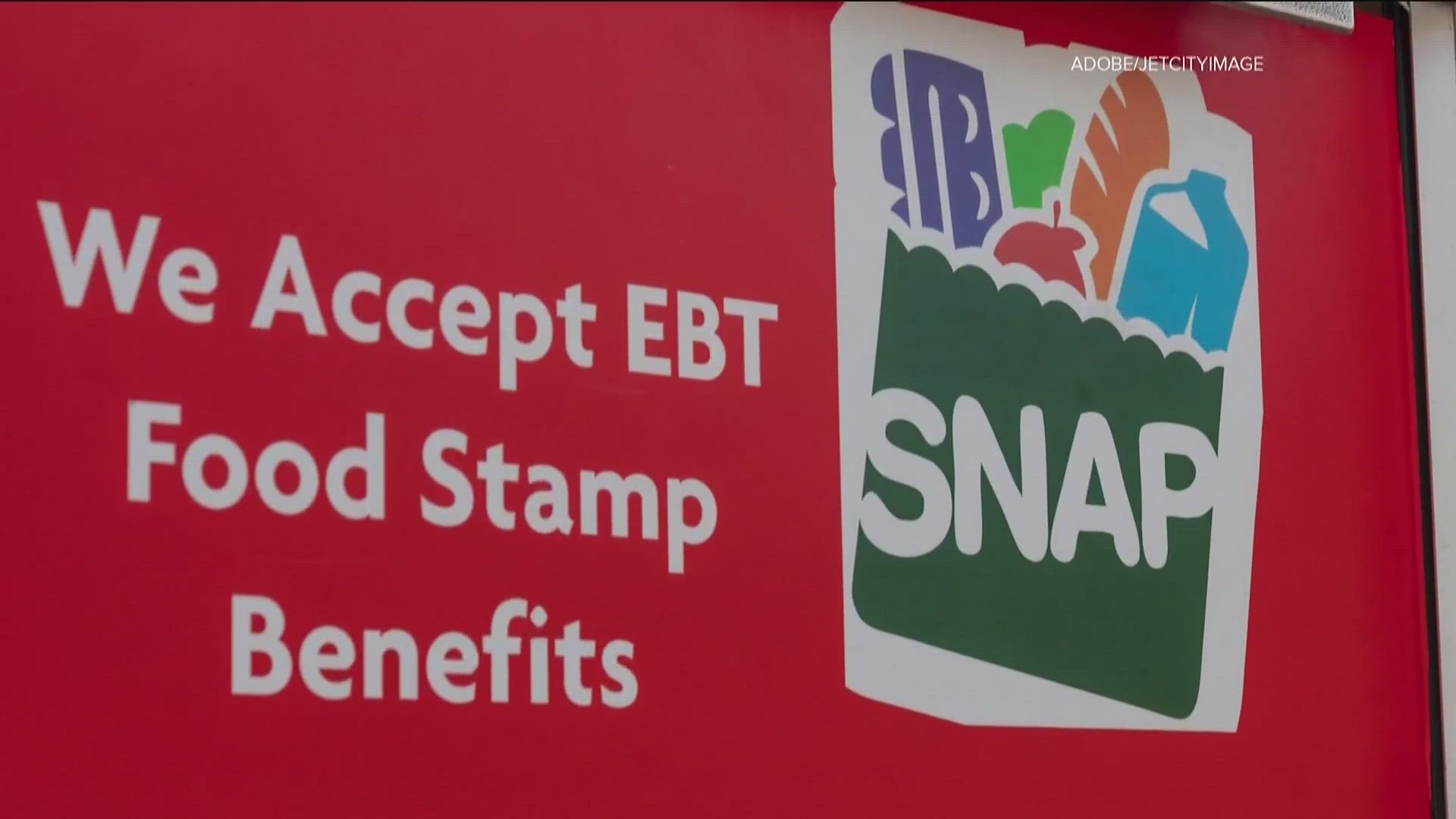ATLANTA — The U.S. Department of Agriculture’s (USDA) Food and Nutrition Service (FNS) released a new report last week showing states’ fiscal year 2022 payment error rates for the Supplemental Nutrition Assistance Program (SNAP).
Georgia’s SNAP program performed worse than the national average with a payment error rate of 14.98%.
The USDA Food and Nutrition Service’s payment error report is one of the quality measures the federal government uses to ensure taxpayer money is spent properly. You can see the report here.
The fiscal year (FY) 2022 report marks the first published since the quality check was put on pause during the pandemic, thus highlighting the pandemic strain on the system, according to a release by the USDA.
“In spring of 2020 — when millions of Americans lost their jobs before the pandemic was under control — SNAP was expanded on a temporary and emergency basis, at the direction of a bipartisan majority in Congress, and policy flexibilities were created to help the rising number of people in need of nutrition assistance. Workers in SNAP state agencies responded swiftly to meet this demand and provided a vital lifeline for families in need,” USDA Deputy Under Secretary for Food, Nutrition, and Consumer Services Stacy Dean said. “However, these circumstances also put incredible strain on program administration. The first state-by-state set of payment error rates coming out of the pandemic reflects the challenging circumstances under which the state agencies were operating, and from which many are continuing to recover.”
11Alive reached out to the Georgia Department of Human Services for comment on the latest payment error rates. The agency declined to comment.
State rates vary widely, with Alaska experiencing the most significant errors based on the report at nearly 56.97%. The national average is 11.54%, an increase from the 7.36% rate in 2019. The quality check requires all states to randomly select a certain number of SNAP cases to doublecheck eligibility and benefit levels.
The error rate includes both overpayments and underpayments of benefits, though across the states - including Georgia - the large majority of errors are overpayments. Georgia's overpayment rate was 11.75% and underpayment rate was 3.23%. Georgia was one of three states (plus Washington, D.C. and Guam) with an underpayment rate above 3%.
States who have high payment error rates must work with FNS on corrective action plans and other ways to reduce mistakes, while states that have high rates for two years consecutively are charged a penalty.
RELATED: SNAP delays in Georgia | How the state and federal government are working to resolve issues
USDA FNS notes that “these improper payments are usually due to unintentional mistakes,” such as “incorrectly (calculating) a household’s expenses, or a recipient may not know that they need to report a small change in their hourly wage.”
Georgia’s payment error rate, however, has continued to increase over the past decade. For the FY 2019 report, the state was issued a liability of nearly $7 million.
While no penalties will be issued as a result of the latest report, experts caution that the benefit delays in Georgia could be indicative of a second problematic year to come.
“The problems that you're seeing, I think, are indicative of a system that is under a great deal of stress and having trouble performing,” David Super, professor of law at Georgetown University, who has followed Georgia’s SNAP system, explained. “The federal government has been sympathetic to states. They've been trying to make a lot of changes on the fly in the pandemic. And so it has tried to give states some slack. But ultimately, this program involves too many taxpayer dollars not to let the accountability come back into force.”
SNAP payment error rates in Georgia, since 2010:
(*FY stands for fiscal year)
- FY 2010: 1.99
- FY 2011: 2.71
- FY 2012: 3.18
- FY 2013: 5.11
- FY 2014: 6.49
- FY 15: n/a per USDA data
- FY 16: n/a per USDA data
- FY 17: 6.53
- FY 18: 9.11
- FY 19: 9.30
- FY 2020 *no report issued
- FY 2021 *no report issued
- FY 2022: 14.98

